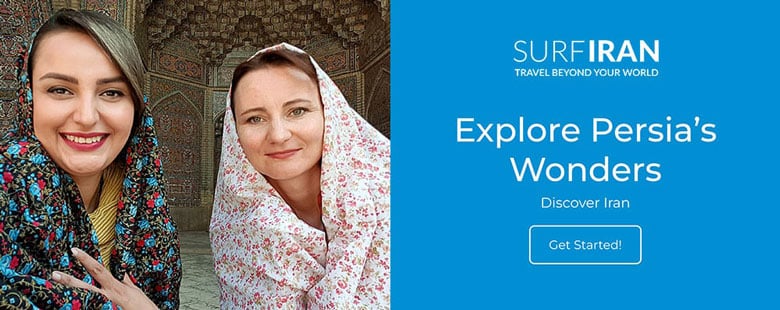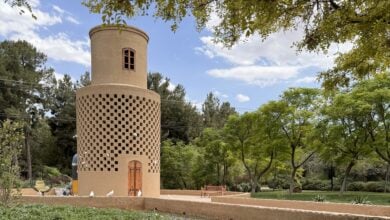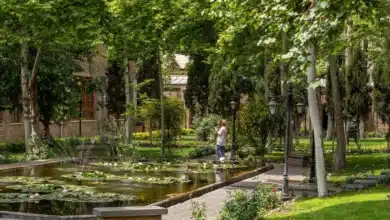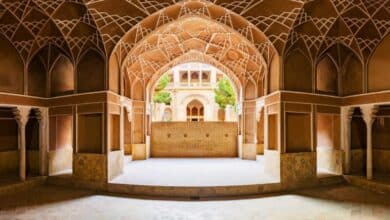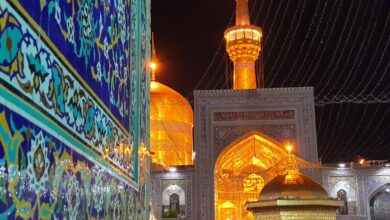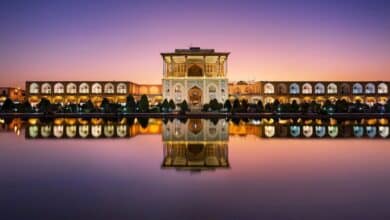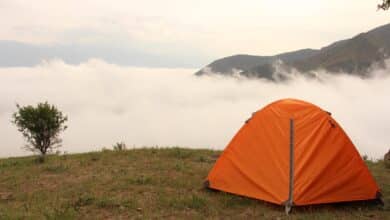Ganjali Khan Complex: Discover the Heart of Kerman
Plan Your Visit Today to This Architectural Gem

Step inside a lost world at the Ganjali Khan Complex, beautifully hidden among Kerman‘s winding lanes. Within this expansive complex lie unexpected treasures for those willing to uncover what remains of the city’s storied past.
Stroll the centuries-old walkways, their aged stones worn smooth with time. Around each bend awaits discoveries -exquisite tilework in dazzling hues and frescoes restored from centuries past. Let your imagination transport you to evenings when twinkling lights guide merchants home. Built by the visionary governor Ganjali Khan, the complex includes:
- A bustling bazaar.
- A serene mosque.
- A welcoming caravanserai.
- A grand bathhouse that once served as a social hub.
Each structure tells a unique story, making the Ganjali Khan Complex a must-visit for anyone eager to step back in time and experience the timeless beauty of Kerman.
Contents
The Ganjali Khan Complex at a Glance
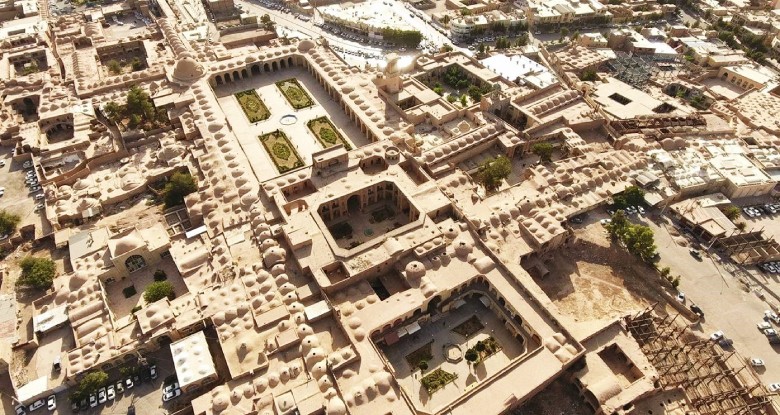
The Ganjali Khan Complex is a significant attraction in Kerman, renowned for its vastness and diverse sections. Spanning 11,000 square meters, it comprises urban infrastructure built for Kerman’s development during the Safavid era. The complex includes elements like bazaars, mosques, caravanserais, and more, embodying the principles of historical Iranian urban planning.
Construction of the complex began in 1005 AH under the governorship of Ganjali Khan, who ruled Kerman for nearly three decades. The original complex included a school, caravanserai, and bathhouse established between 1596 and 1612 AD. A water reservoir and mint were also constructed in the western and northern wings, respectively. The most impressive undertaking was the construction of the Bazaar and its surrounding precinct in 1005 AH.
Architectural Highlights
Ganjali Khan Bathhouse

The Ganjali Khan Bathhouse remains an artistic triumph, incorporating principles honed over Iranian history. This bathhouse was built to enhance Kerman’s commercial and cultural life in its busy city center. Stepping into its preserved ruins today provides insight into Kerman’s past glory under Safavid rule. The bathhouse’s intricate tilework and frescoes captivate visitors, showcasing the skillful fusion of tradition and innovation by Iranian talents.
The Courtyard and Gardens
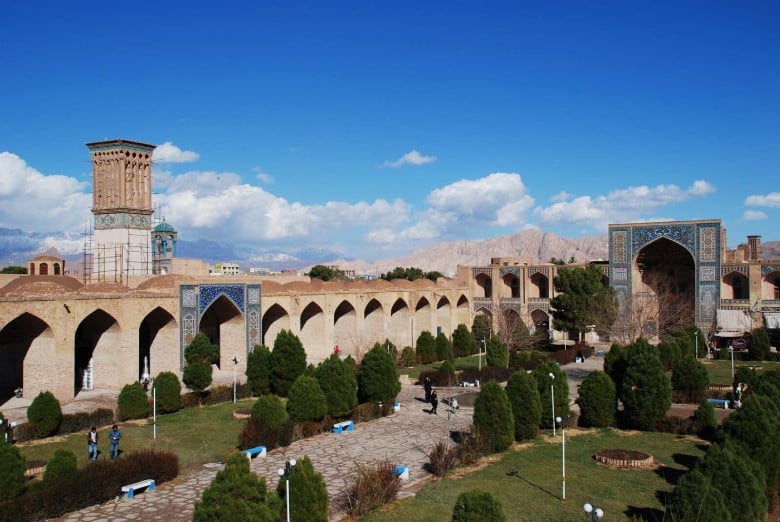
The courtyard features four rectangular gardens meticulously aligned to avoid overlapping with their neighbors. The central circular pond is essential to the essence of Iranian architecture. The intricate tilework and frescoes on the walls and entrances of this complex are captivating, designed by Sultan Mohammad, a skilled architect from Yazd. Today, the complex has transformed into one of Kerman’s historical attractions, leaving a lasting impression on visitors.
Sections of the Ganjali Khan Complex
School and Caravanserai
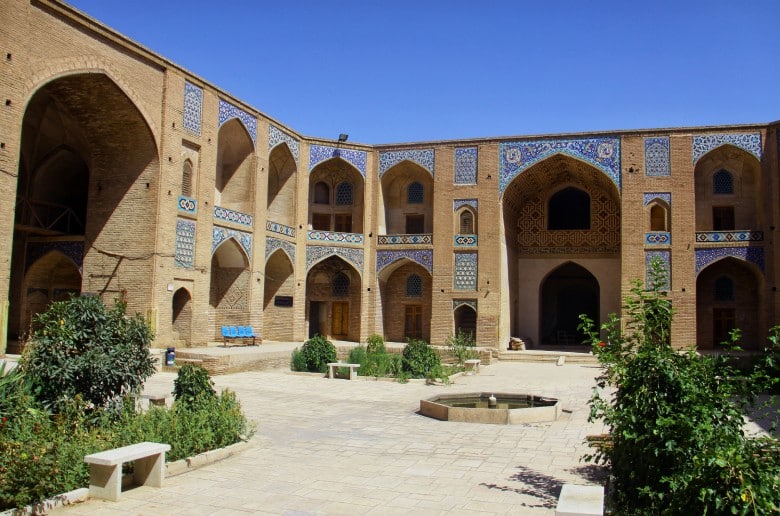
The school later converted into a seminary, had four open iwans (vaulted halls) for students. Built between 1007 AH and 1021 AH, these structures were later destroyed by Agha Mohammad Khan Qajar. Today, the seminary and caravanserai have become the Faculty of Arts at Bahonar University in Kerman. The Ganjali Khan Caravanserai, with its blue, white, and brown-painted entrance and interior walls, served as a resting place for weary travelers.
Mosque
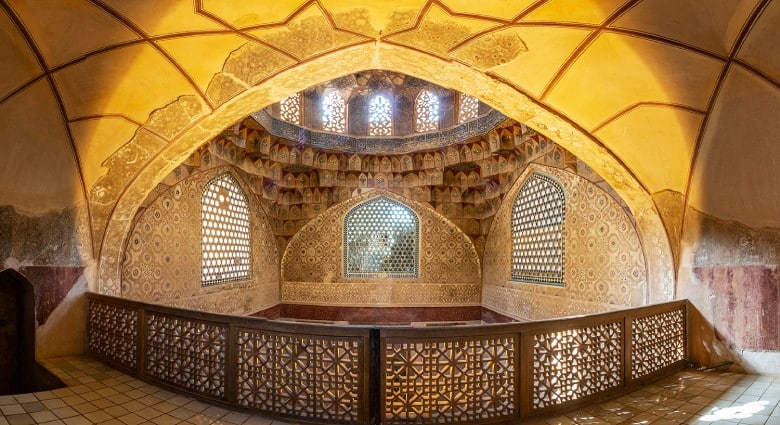
The simple yet striking Ganjali Khan Mosque has served as a place of prayer since 1007 AH, as denoted by its iwan facade and ornate stucco designs. Despite their modest size, the interiors captivate through carvings, calligraphy, and craftsmanship evident across decorations. Located in the northeastern corner, it historically accompanied the seminary and caravanserai.
The Square
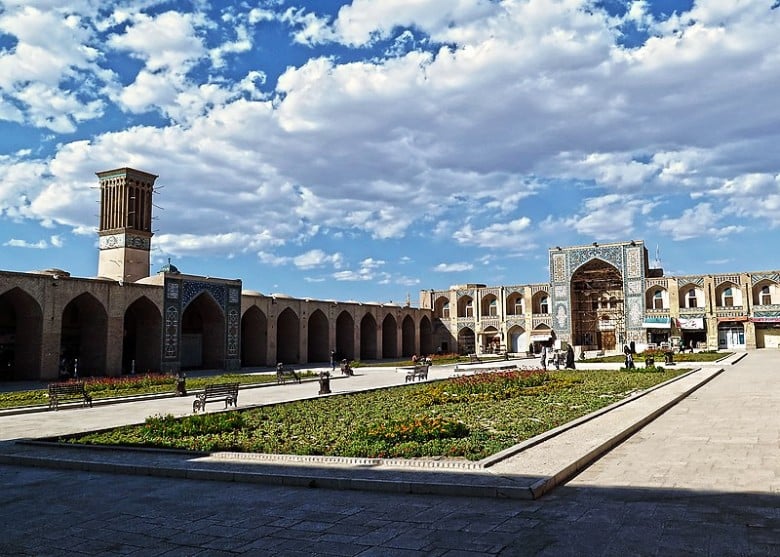
The Ganjali Khan Square is akin to the Naqsh-e Jahan Square in Isfahan, featuring tilework, a pond, and brick iwans surrounded by verdant spaces. The square exemplifies the principles of Iranian square urban planning, with characteristic urban elements arranged in precise proportions around it. It was constructed in 1020 AH and stands as a testament to historical urban characteristics.
The Bazaar
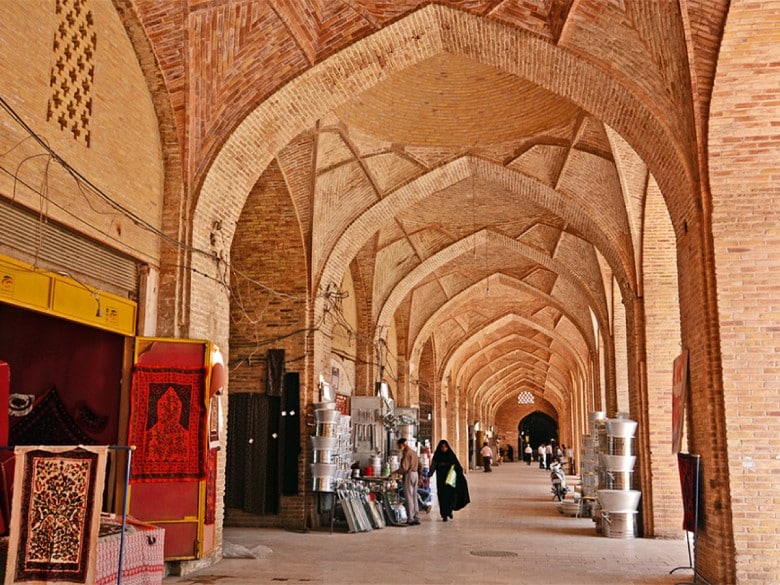
The Ganjali Khan Bazaar, built in 1005 AH, features 18 shops and is part of the Grand Bazaar of Kerman. This Bazaar, with its brick arches, brickwork architecture, and stained-glass windows, has preserved the authenticity of Iranian architecture. It extends 93 meters in length and 5.75 meters in width, accommodating a significant number of visitors.
The Bathhouse
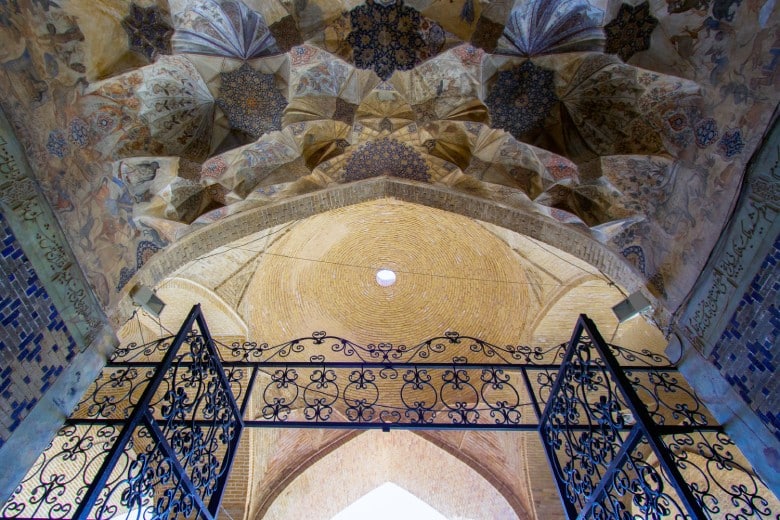
The Ganjali Khan Bathhouse, constructed in 1020 AH, spans 1,300 square meters. It features well-crafted pillars, muqarnas (decorative vaulting), stuccowork, tilework, and stone decorations. The bathhouse’s paintings, depicting tales from Persian literature, tell stories that require only the eyes of the heart and a penetrating gaze. The bathhouse has been converted into the Museum of Anthropology in Kerman.
The Copper Bazaar
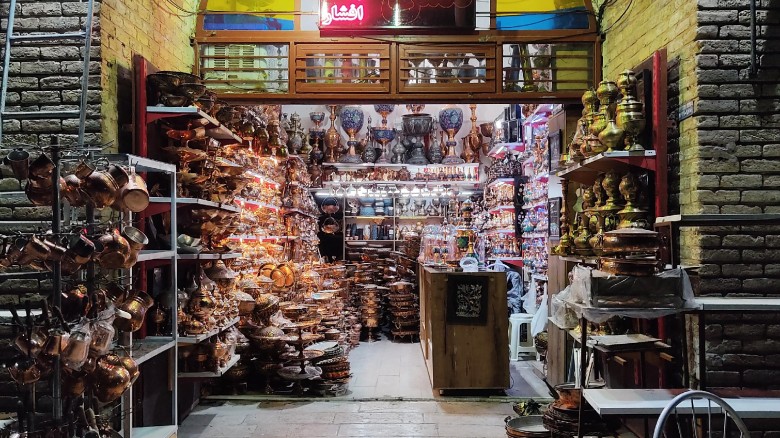
The Copper Bazaar, extending from east to west and north to south, is now a museum. The melodic sound of copper vessels captivates visitors, leaving them both intoxicated and lucid.
The Water Reservoir
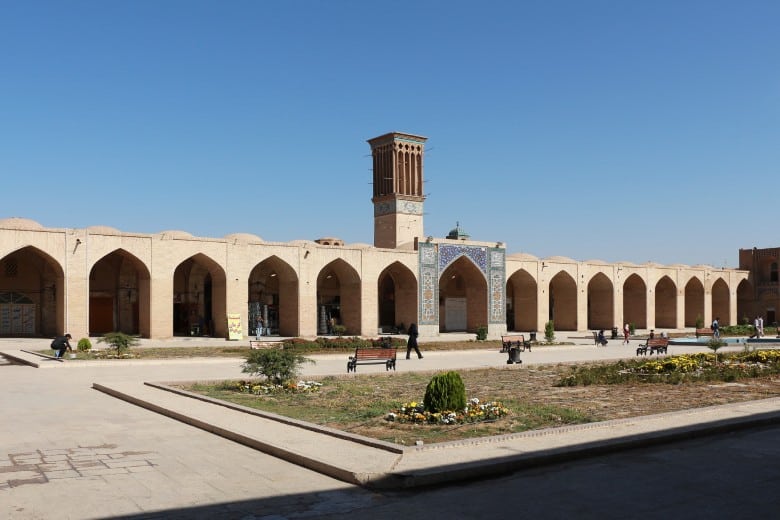
The Ganjali Khan Water Reservoir, built in 1209 AH, features a descending corridor and a square and rectangular reservoir plan. It quenched the thirst of the city and the merchants of the complex. The entrance of the reservoir features muqarnas (decorative vaulting) and tilework, and it was registered as a national heritage site in 1968.
The Mint
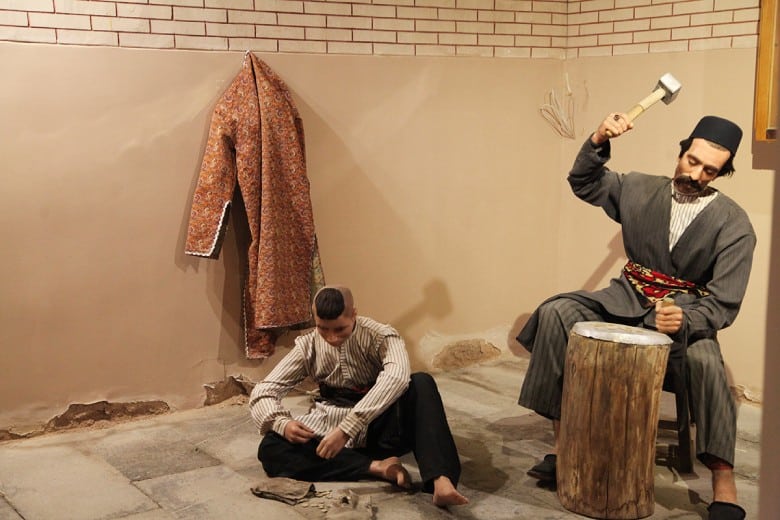
The mint, with its stuccowork resembling faux brickwork, glistens in the northern wing of the square. Constructed between 1007 AH and 1021 AH, it has been transformed into Iran’s most valuable coin museum since 1991. The museum houses numerous ancient coins from various historical eras.
Who was Ganjali Khan?
Ganjali Khan was a brave commander during the Safavid era and served as the governor of Kerman. His 30 years of service in Kerman contributed significantly to the city’s development and prosperity. He maintained a balance between politics, economics, and society, with his architectural works, especially the Ganjali Khan Complex, being his most prominent contribution.
Visiting the Ganjali Khan Complex
BOOK ONLINE
Kerman Hotels
Best Time to Visit
The best time to visit the Ganjali Khan Complex is during the spring and the Nowruz holidays when it is in full splendor. Summer’s heat and winter’s cold can be overwhelming, making spring the ideal season for exploration.
Opening Hours
The Ganjali Khan Historical Complex welcomes visitors every day except holidays. To fully explore the complex and witness its various components, allocate approximately two hours. Entrance tickets are required for the sections converted into museums.
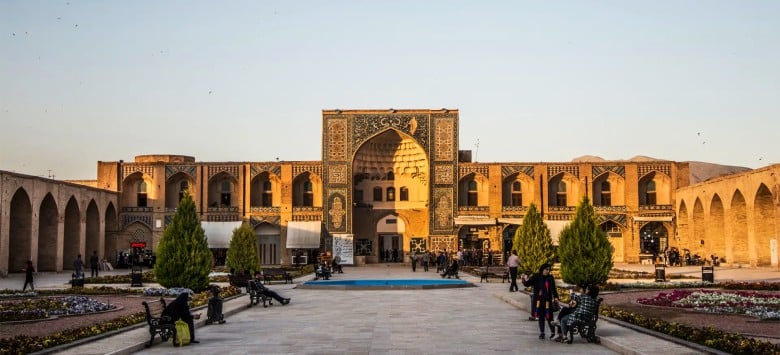
Location and Directions
The Ganjali Khan Complex is situated near Shohada Square in Kerman, between Imam and Shariati Streets. Visitors can reach the complex by bus or car from the Shariati Street bus stop. The complex is easily accessible and well-signposted.
Location
Iran, Kerman Province, Kerman City, near Shohada Square, situated between Imam and Shariati Streets, at the beginning of the famed Kerman Bazaar lies the historical Ganjali Khan Complex.
Final Words
The Ganjali Khan Complex offers a fascinating window into Kerman’s storied past. Every nook tells of the city’s architectural and cultural heritage, from the grand bathhouse to intricate tilework and frescoes. Stepping within its walls grants rare transport back to vibrant eras under Ganjali Khan’s rule.
Frequently Asked Questions About the Ganjali Khan Complex
Where is the Ganjali Khan Complex located?
The Ganjali Khan Complex is located near Shohada Square in Kerman city.
What are the various sections of the Ganjali Khan Complex?
Spanning various sights, visitors find a preserved bazaar, mosque, school, caravanserai, bathhouse, water reservoir, and mint amongst its walls.
Who built the Ganjali Khan Complex?
Governor Ganjali Khan of Kerman, during Safavid rule, envisioned and erected this diverse complex.
What is the most notable feature of the Ganjali Khan Bathhouse?
Its stunning stuccowork and exquisite wall paintings continue to intrigue visitors today.
